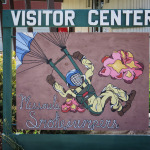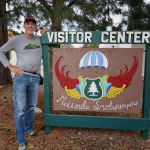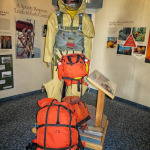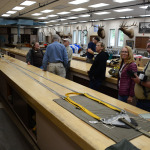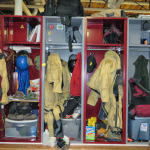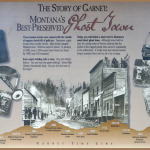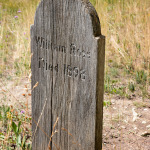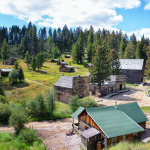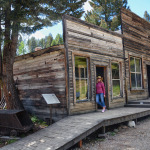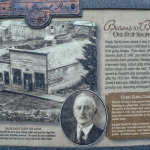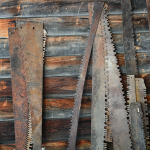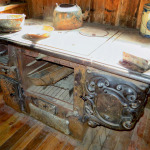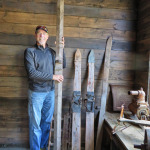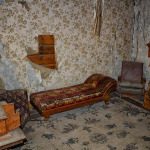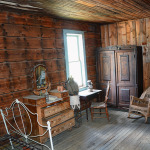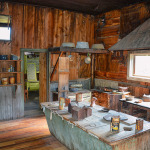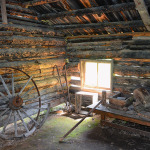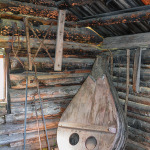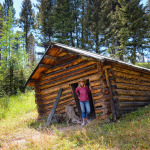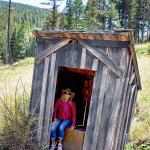Monday, Sept 1st, Labor Day. We arrived in Missoula, MT, yesterday and decided to spend a day sightseeing the town. The Smokejumper Visitor Center was recommended as it is the last day that it is open to the public. It is home to the largest Smokejumper base in the country. There is a museum and gift shop to explore and the free tour we took provided a unique and interactive opportunity to learn about this very demanding and important occupation. We saw the loft room where they hang their parachutes to inspect them for tears and the ready room with long tables, where the Smokejumper learns the art of folding his parachute. We visited the locker room and went outside to see the aircraft they jump from, called the Sherpa. There were no Smokejumpers being dispatched to fight a fire today.
Off we go to visit the Garnet Ghost Town, Montana’s best preserved ghost town, hidden high in the Garnet Mountain Range east of Missoula. We took Rte 200 and after 30 miles turned onto a narrow dirt road for 11 miles climbing and winding our way to what’s left of the town of Garnet. On the way we stopped at a small graveyard by the side of the road with old wooden tombstones of some of the prospectors. Written on one of the tombstones was the name “William Ross Died 1898”, very simple. Garnet Ghost Town was established in 1895 and lasted until 1948 when the town owner passed away. This remote town boasted hotels, stores and 13 saloons, as well as a school, laundry, drug store and a weekly newspaper. The “boom” began by January 1898 nearly 1000 people resided in Garnet. The residents were mostly eager miners and entrepreneurs who built quickly and without planning. Most of the buildings had no foundations and today the ones still standing are slightly leaning to one side. But Garnet was not destined to last. By 1912, the large strikes were depleted, fire raged through the town and most miners had left. We went into the General Store and saw some of the old merchandise and then to the Hotel that still had the original wallpaper, peeling from the walls and ceilings. It was interesting to walk through the buildings and grounds to experience what kind of life style the pioneers had to endure. Fortune seekers came to Garnet searching for the “mother lode” the source of the town’s placer gold, and then eventually went underground to mine the gold. We walked the Sierra Mine Loop trail that led past these old mines, just water-filled shafts now. Today, most of the town is publicly owned and managed by the BLM, who are stabilizing and preserving the remaining two dozen buildings. It was over an hour drive to visit the Garnet Ghost Town but well worth it. “The miners of Garnet embodied the spirit of homesteading, driven by the hope for a better life”.


